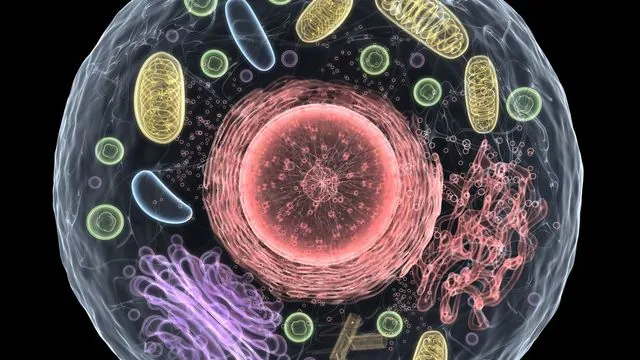
Unlocking the Secrets of Cell Growth: How Do Cells Manage Space for Organelle Development?
2025-06-09
Author: Daniel
Imagine Cells as Cities: The Challenge of Growth
Think of a living cell as a bustling city, where the urban planner (a.k.a. the cell) must determine how to maximize space for diverse functions. Just like in a real city, areas must be designated for residential, commercial, and industrial uses, all while managing waste effectively. As the city expands, so must these designated areas—but not all parts grow uniformly. The crucial question is: how do cells allocate resources to ensure efficient growth?
A Revolutionary Study on Organelle Growth
Recent research led by Shankar Mukherji, an assistant professor of physics at Washington University in St. Louis, is pioneering our understanding of this cellular organization. Published on June 6 in Cell Systems, this groundbreaking study utilized innovative hyperspectral imaging technology to explore the growth patterns of organelles in rainbow yeast cells.
Mukherji and his team are trailblazers in applying this technology to cellular studies, enabling them to visualize multiple organelles simultaneously, rather than just examining single or paired structures, as has been the norm.
Data-Driven Insights into Organelle Prioritization
By employing data science techniques, the researchers uncovered how cells strategically pattern their organelles based on varying growth conditions and signaling pathways. Mukherji emphasizes the brilliance of cells in modulating the growth rates of different organelles according to metabolic needs.
The Unsung Hero: Vacuoles in Cell Growth
One of the standout findings was the pivotal role of the vacuole, which helps maintain steady growth amidst fluctuating circumstances. This organelle appears to be crucial in buffering the cell against unpredictable changes, responding adeptly to shifts in environmental conditions that require alterations in growth rate.
Understanding the Dynamic Nature of Growth Patterns
The team's investigation also shed light on how changes in cell size and growth rate trigger distinctly different patterns of organelle growth. This revelation is vital for understanding how eukaryotic cells adapt to competing demands of size and growth rate, ultimately balancing these without compromising efficiency.
Looking Ahead: Implications for Human Health
As they move forward, Mukherji and his team plan to apply these insights to human cells. They aim to discover whether the relationships between organelle profiles, cell size, and metabolic properties remain intact or become disrupted in diseases like cancer, diabetes, and immune disorders. Their goal is to determine whether these patterns are merely diagnostic or could be fundamental factors in disease progression.
This research not only deepens our understanding of cellular dynamics but also opens doors to future studies that could revolutionize our approach to treating metabolic diseases.



 Brasil (PT)
Brasil (PT)
 Canada (EN)
Canada (EN)
 Chile (ES)
Chile (ES)
 Česko (CS)
Česko (CS)
 대한민국 (KO)
대한민국 (KO)
 España (ES)
España (ES)
 France (FR)
France (FR)
 Hong Kong (EN)
Hong Kong (EN)
 Italia (IT)
Italia (IT)
 日本 (JA)
日本 (JA)
 Magyarország (HU)
Magyarország (HU)
 Norge (NO)
Norge (NO)
 Polska (PL)
Polska (PL)
 Schweiz (DE)
Schweiz (DE)
 Singapore (EN)
Singapore (EN)
 Sverige (SV)
Sverige (SV)
 Suomi (FI)
Suomi (FI)
 Türkiye (TR)
Türkiye (TR)
 الإمارات العربية المتحدة (AR)
الإمارات العربية المتحدة (AR)